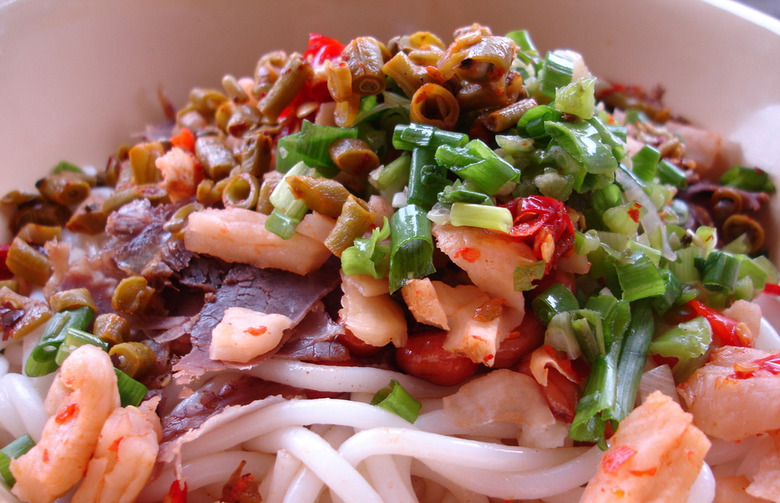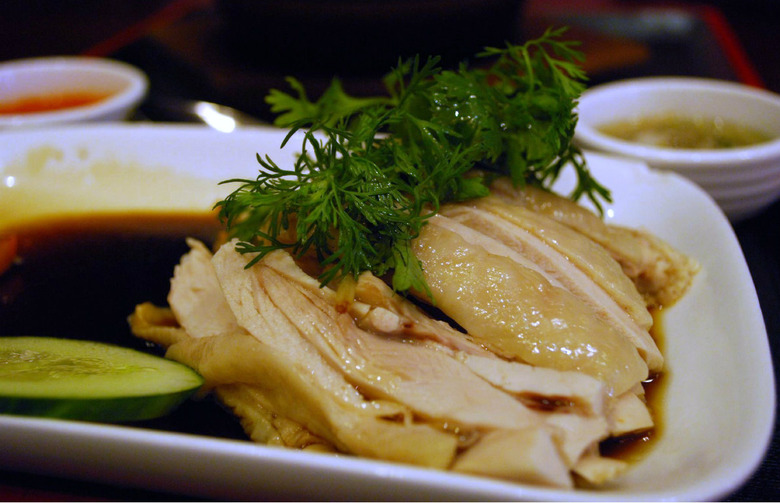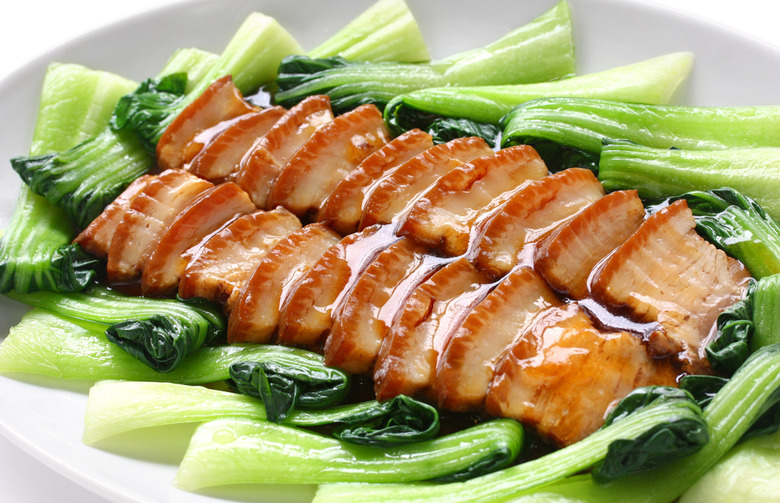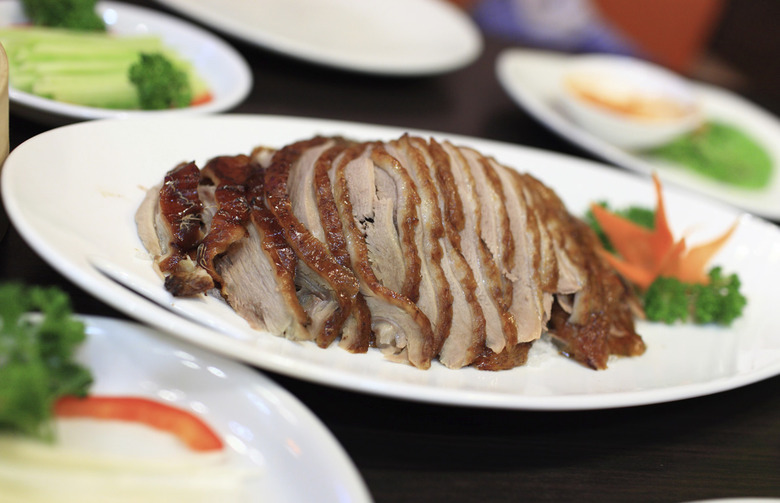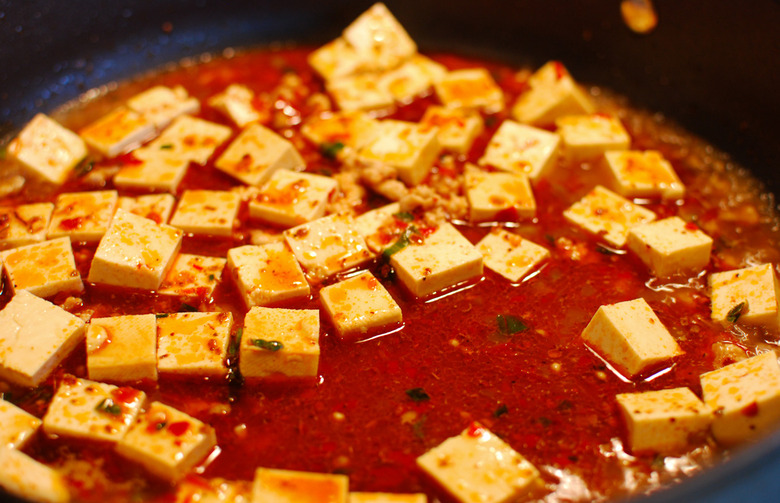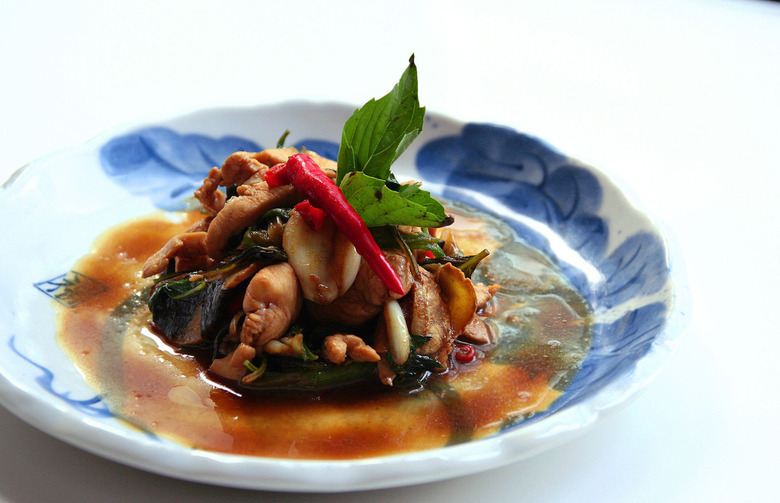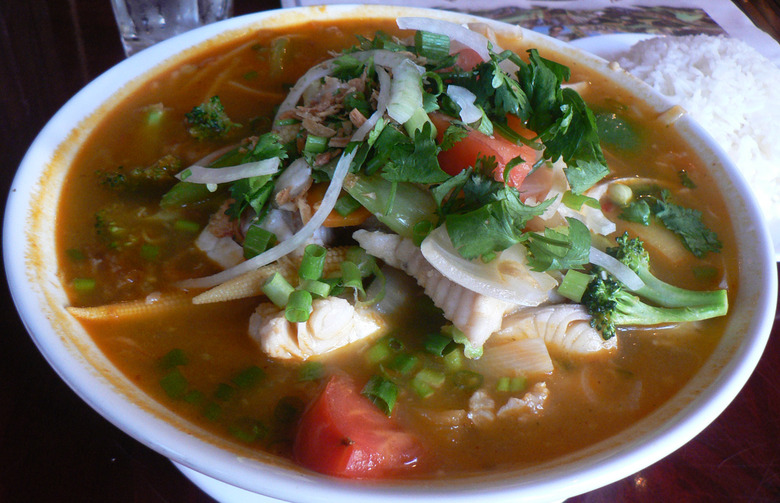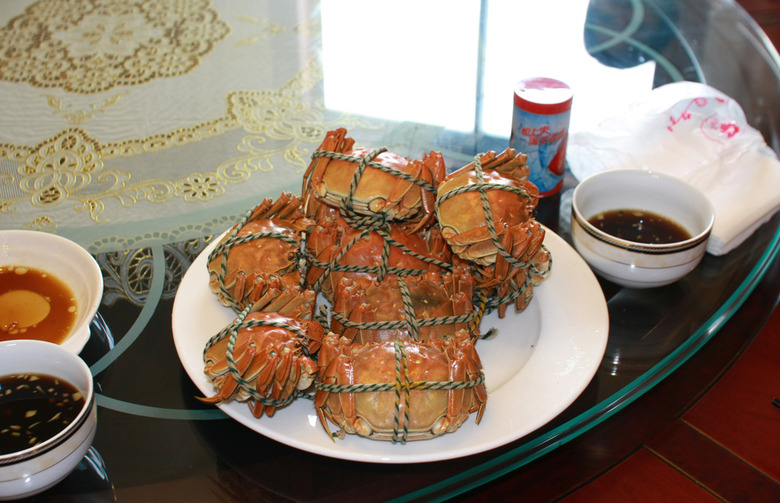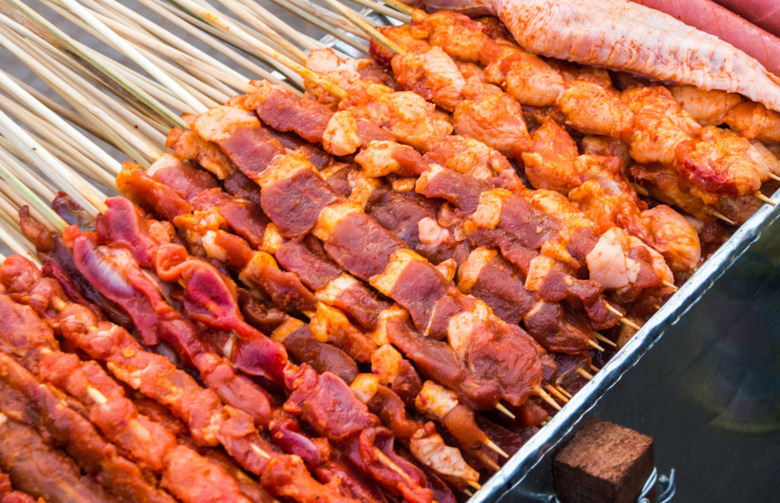Visiting China? You Have To Try These 10 Iconic Dishes
China is a very big, very crowded country, so there is a lot to see — and eat — in this culturally rich nation. Here are 10 iconic dishes that you should not leave China without tasting.
Guilin Rice Noodles
When in Guilin, China, eat noodles for breakfast. The local dish consists of a bowl of rice noodles served with fried peanuts, soybeans, chiles, spring onions, and thin-sliced meats. That's something we'd definitely love to wake up to.
Hainan Jifan (Hainanese Chicken)
You've probably seen this dish on Chinese restaurant menus outside China, but eating local makes all the difference here. Hainanese chicken traditionally uses chicken from Wenchang, a county in Northeast Hainan, and is served with a bowl of rice that's been cooked in chicken stock and fat and a chile dip.
Hongshaorou (Red Braised Pork Belly)
This Shanghainese dish consists of the lean meat of pork belly cooked in its own fat and braised for hours, resulting in a succulent, flavorful dish that is rich and slightly sweet.
Kaoya (Peking Duck)
One of China's most cherished dishes, kaoya, or Peking duck, has been around since the 1300s. Eating this perfectly roasted whole duck is a communal experience; traditionally, the chef serves and carves the duck for diners. It is eaten with pancakes and vegetables. You cannot leave Beijing (formerly known as Peking) without eating this dish.
Mapo Doufu (Mapo Tofu)
Deep red in color and not shy of chile peppers, mapo tofu has a rich flavor that keeps your mouth tingling. Ginger adds complexity to the dish, and the minced beef offers a tasty contrast to the tofu.
Sanbeiji (Three-Cup Chicken)
Sanbeiji, or three-cup chicken, is a specialty of Ningdu County in the Jiangxi province of southern China, and is popular in Taiwan. It gets its name from its original recipe, which used one cup each of rice wine, soy sauce, and sesame oil, but luckily, modern chefs don't follow that rule. It is served piping hot and with barely any sauce (the chicken is supposed to absorb all of it as it cooks).
Suan Tang Yu (Fish in Sour Soup)
"Popular amongst the Miao tribespeople in the lush hills of Guizhou, this sour fish soup is made with fermented rice, tomatoes, pickled chiles, and various herbs, all of which are cooked with a full freshly caught river fish to create a gorgeous, thick, and aromatic broth," writes James Tan.
Shanghai Hairy Crab
Nothing says autumn in Shanghai like the ubiquity of this seasonal dish that tastes a lot better than it sounds. This freshwater crab gets its name from its hairy claws, and its roe is especially sweet and tasty. It's so popular that you can even get it from a vending machine. When steamed, these crabs have such a wonderful natural flavor that all you need is a vinegary dipping sauce to go with them.
Xiaolongbao (Soup Dumplings)
Soup dumplings, a Shanghainese specialty, have become so popular that we wonder if we even need to describe them. For the uninitiated, they are meat dumplings, made with pork, crabmeat, or a combination of both, filled with soup. "Each bite-size bun has precisely 18 folds, and is a perfect package, implausibly delicate, that sags when grasped between a pair of chopsticks, and tastes as perfect as it looks," says special contributor Lauren Mack in our article on the 101 Best Restaurants in Asia.
Ziran Yangrou (Chinese Cumin Mutton)
This spicy lamb or mutton dish, flavored with cumin and Sichuan peppercorns, is popular in the Sichuan province, but actually hails from Xinjiang, where the Muslim and Mongolian influence is evident in the region's cuisine. It's a testament to the diversity of China and its cuisine. Another great Muslim and Monglian-influenced dish? The Chinese bagel.

